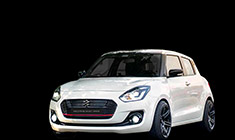News
Mahindra BE 6, XEV 9e could get 79 kWh battery on lower trims
Since their launch, Mahindra has sold over 6,300 units of the BE 6 and XEV 9e.
Mahindra plans to offer the larger 79 kWh battery pack on lower variants of the BE 6 and XEV 9e. Currently, this is only available on the top Pack Three variant.
Since their launch, Mahindra has sold over 6,300 units of the BE 6 and XEV 9e. According to the company, more than 75% of customers opted for the top-spec Pack Three variant, which offers a range of 683 km on the BE 6e and 656 km on the XEV 9e.
More than 75% of customers opted for the long-range Pack Three variant
As demand for the longer-range variant is high, Mahindra could offer the 79 kWh battery pack at a lower price point. Currently, the lower trims of the BE 6 and XEV 9e are offered with a 59 kWh battery, offering a range of 557 km and 542 km, respectively.
Rajesh Jejurikar, Executive Director and CEO (Auto and Farm Sector) at Mahindra, stated that the company is rethinking its variant line-up to offer the 79 kWh battery on lower trims. “There is a very large segment of people who will want 79 kWh in lower packs. This has been very different from our assumption that 79 kWh will be only in the top end and everything else will be 59 kWh. There is a segment of people for whom range is really important over many of the other features that we are offering,” he said.
Source: Autocar India
News
Gurgaon to Manali and back in Mahindra XEV 9e: Range & charging details
The efficiency that the electric vehicle returned in the steep uphill section and downhill was mind-boggling!
BHPian purohitanuj recently shared this with other enthusiasts:
Highlights
- 4000+Kms covered in 1 month of ownership. This is my fastest ever!
- Gurgaon to Manali, 568Km in 107% SOC (from 200M to 1900M)
- Manali to Gurgaon, 558Km done in 81%
- Efficiency of ~4km/kWh during the steepest hill climb (considering 100% climb)
Details
Left with 98% SOC and ODO 2822KMs

Took a quick 30-minute break at McDonald's takeaway. This place had 6 x 240 kw Glida chargers from KemPower
ODO = 2989KM

167KMs travelled in 28% SOC

Recharged from 70% to 92% in 30mins

Took lunch break at Rupnagar - JioPulse
ODO = 3168KM

Travelled 180km from the last stop with 60% SOC.
Again took a 30 min quick lunch break and topped up to 88%

Reached Manali with 43% SOC.
From the last stop in the plains, we travelled 220Km in 45% SOC.
ODO = 3383KM

Stayed at Duffdun home and asked the owner to allow AC Slow charging, which he allowed.
Looks like Europe!

AC Charging Setup

Covered Manali - Sissu - Manali the next day and also checked out the Adani charger in Sathak Regency. The charger is working, but it's in the basement parking and the entry and exit is very tricky.
On the way to Sissu

At Sissu waterfall

The efficiency we got for the steep uphill section and the downhill was mindboggling. 94Kms trip with 14.4km/kWh!

Return Leg
Left Manali with 83% SOC. ODO = 3527.

I had the option to charge to 100% before leaving, but I wanted to use full regen.
Travelled 30KMs with 0 SOC usage!

Topped up 25% again on the same JIOPulse Haveli with a break of 27mins
Reached home with 27% SOC.

Final full trip details

Check out BHPian comments for more insights and information.
News
Finally test drove the new Mahindra electric twins; First impressions
I finally managed to test drive both the BE6 and the XEV 9E - and I have to say, “Hats Off Mahindra and Mahindra” - both the cars are truly outstanding.
BHPian Hayek recently shared this with other enthusiasts:
First the BE6. It looked great in the pictures, and even more drool worthy in real life. If ever there was an India car worthy of the monicker “6E”, this is it!

You sit down in the driver’s seat and the car genuinely seems built around you. My test drive unfortunately was a short 5 km spin on Marine Drive - not even the entire length. But the car seemed great to drive - zero body roll, going exactly where you wanted it, and fantastic power even in Everyday mode. The regeneration implementation was outstanding too - as good as that in the Ioniq 5. The only negative was the wheel spin and squeal when you accelerated quickly. A similar squeal was heard while braking - and not extreme braking - just normal everyday 80-20 deceleration. The SA claimed it was because it is a powerful rear wheel drive - I didn’t buy that; but the car seems extremely under-tired relative to the power it puts out. It clearly deserves better tyres than the 245/55 R19 Goodyears it was shod with. But that is a minor quibble - as a driver’s car, this is far better than what I had imagined even after seeing and reading all the reviews.
However, the rear seat is a joke. Despite the warnings, I hit my head the first time I got in - and hit my head again despite trying to avoid it the next time (yes, I need to work on my flexibility - but am sure there will be people fatter and less flexible than me). And rear seat knee room was atrocious - my knees dug into the driver’s seat behind my driving position (and I am just 5’10”).

Boot space was atrocious as well - so think this is a really a European style hot hatch and wonder how many Indians will ultimately buy it.
Next the XEV 9E. If Mahindra planned their strategy as draw them in with the BE6, and sell the XEV 9E, I think it will work. While not as 6E as the BE6, it looks much better in real life than it does in pictures.

The front seat is nice - with a seating position very similar to that in my X3. You don’t feel the extra bulk of the car even while driving it immediately after the BE6. Power delivery is great, interiors are fantastic, the frunk is huge, and boot even if it didn’t look 650 l is extremely deep (but not very tall). I found the same issue with the squeal on launch and braking as in the BE6. But more positively, like in the BE6, body roll was negligible - not as planted as an X3, but great compared to most crossovers of similar size. This car will certainly be in our consideration set for the next purchase in a couple of years.
Once again, Hats Off Mahindra!!!
Check out BHPian comments for more insights and information.
News
First-gen Toyota Fortuner owner test drives a Mahindra XEV 9e
Took a small 2km test drive of the Mahindra XEV 9e. I drive a Gen 1 Toyota Fortuner and this was my first time driving an EV. Some impressions:
BHPian columbus recently shared this with other enthusiasts:
1. There was no rush at the showroom. Its a Tier 3 capital city. There are 2 dealerships in my city.
2. Initial response to a customer entering the showroom was lackadaisical. However the SA assigned was decently knowledgeable.
3. The vehicle looks striking and the build quality appeared solid.
4. The outside piano black cladding already had minor scratches with wiping from cloth.
5. The inside 3 screen setup was beautiful.
6. The front seats were great. The rear seats required a bit of inclination adjustment to get better under thigh support.
7. Don't understand Mahindra's fixation with white colored seats. They were already spoiled after only a couple of days of TD. Will be a real eyesore every time one gets into the car.
8. I drove in everyday mode which is more than quick for city conditions. Started with regen level 2 and then switched to level 1 as i felt more comfortable in it.
9. The drive was super silent. My daily drive is a gen 1 Fortuner. Felt like moving from the humdrum of a fish market to a pin drop silence room
10. The suspension is compliant and felt like floating on clouds compared to my Fortuner.
11. Switched off all ADAS functions since it was a city drive and i am not used to these functions.
12. The biggest bummer for me was rear visibility. As I looked into the rear view mirror I could only see through a band in the mirror. First I thought that there is some issue with this electronic mirror. But then I realised that this is what you are to get in this design of vehicle . Now I really like to see those pesky bikers sneaking around left and right from behind. You will definitely miss them.
13. Somehow could not get a sharp focused image of the HUD. Maybe it was due to the progressive lenses i wear. Found the HUD a bit distracting.
Overall a brilliant product from Mahindra. However they will really have to up their service levels for such a complex vehicle. My next car would definitely be an EV, but will wait for couple of years for things to stabilize with our Indian manufacturers.
Check out BHPian comments for more insights and information.
- Tags:
- Indian
- Mahindra XEV 9e
News
PPF, ceramic or graphene: What's best for a white Mahindra XEV 9e
Will it really protect against anything more than the lightest swirls? Will swirl marks from washing still appear relatively easily?
BHPian shinigami_xev recently shared this with other enthusiasts:
Hi BHPians,
TLDR; PPF, Ceramic/graphene or no protection for the car? Specially piano black exterior and interiors.
I recently took delivery of my brand new Mahindra XEV 9e in Everest White and, like many, I'm navigating the world of paint protection. I'm hoping to tap into the collective wisdom of this community as I'm quite confused after speaking with multiple detailers who have offered differing advice.
My goal is to protect the car effectively, focusing on a few key areas:
- Everest White Paintwork: Keeping the white looking pristine and protecting it from swirls and minor scratches.
- Exterior Piano Black Cladding: These are large sections on the XEV 9e and seem highly prone to scratches, swirl marks, and potentially stone chips due to their location and finish. This is a major area of concern.
- Interior Piano Black Trim: The dashboard and console areas with the glossy black finish are scratch magnets, and I'd like to minimize damage here if possible.
(Note: For the leather seats, I think I've found a suitable periodic treatment, so my main query is about the paint and plastic trims.)
Here are the options I've been presented with and my associated doubts:
Option 1: Graphene / Ceramic Coating Everywhere (Full Exterior + Interior Piano Black)
Detailer Claims: Some suggest Graphene (or Graphene Matrix) coatings are more durable and harder than standard ceramic, lasting longer.
My Doubts/Concerns based on feedback:
- Will it really protect against anything more than the lightest swirls? Unlikely to help with stone chips on the cladding.
- Will swirl marks from washing still appear relatively easily, especially on the black cladding?
- Will debris hitting the cladding still cause noticeable scratches despite the coating?
- For the interior, I'm told scratches will still happen and cannot be buffed out on coated plastic due to heat sensitivity during buffing. Is this true?
Option 2: Full PPF (Full Exterior + Interior Piano Black)
Detailer Claims: Offers the best physical protection against scratches, stone chips, etc.
My Doubts/Concerns based on feedback:
- Yellowing: Major concern, especially on a white car. How bad is this with modern films? I was told that the car paint yellows slightly anyway, and PPF yellows less, making it a "net win" – sounds like marketing spin?
- Repair Hassle/Cost: If a panel (especially the large cladding) gets dented or needs repair, I'd have to pay for PPF removal, then panel repair/replacement, then PPF reapplication. This seems incredibly expensive and complex. Some suggest replacing the cladding panel might even be cheaper than the PPF hassle.
- Interior Application: Concerns about water usage during install potentially affecting electronics (even if a small risk?). Also heard PPF edges might lift over time on interior gloss plastics.
Option 3: Hybrid Approach (My Potential Idea)
- The Idea: Apply Graphene/Ceramic Coating on the white painted surfaces. Apply PPF only on the vulnerable exterior Piano Black Cladding (potentially a more budget-friendly PPF specifically for this high-impact area).
- Potential Pros: Balances protection where needed most (cladding) with cost-effectiveness and ease of maintenance (coating on paint). Avoids major yellowing concerns on the main body.
- Potential Cons: Managing two types of protection. Need to ensure even the "cheaper" PPF on cladding is of decent quality.
Cost Context (Approximate Quotes Received):
- Full Graphene/Ceramic: ~₹35k - ₹40k
- Full PPF: Ranges wildly from ~₹70k (basic) to ~₹2 Lakh+ (premium brands like Llumar)
- Hybrid (Est. Graphene on paint + Basic PPF on cladding): Might roughly total ~₹60k - ₹70k? (e.g., ~20k partial coating + ~40k partial PPF)
My Key Questions for the Community:
- Is there a significant real-world difference in durability/protection between good Ceramic and "Graphene" coatings, or is it mostly marketing?
- For those with white cars and PPF: How has yellowing been over 2-3+ years with modern films? Which brands fare better?
- Has anyone dealt with panel repairs on a PPF-wrapped car? Was the cost/hassle of PPF removal/reapplication substantial, especially for plastic cladding?
- What's the most practical way to protect interior piano black? Is PPF worth the potential hassle, or is careful use the only real answer? Does coating offer any meaningful protection there?
- Considering my specific concerns (cladding vulnerability, interior scratches, white paint), which approach (Full Coat, Full PPF, Hybrid) seems most logical to experienced members?
I'd be grateful for any insights, real-world experiences (good and bad!), and advice, especially from long-term users or professional detailers on the forum who can cut through the noise.
Check out BHPian comments for more insights and information.
News
I achieved a range of 515km on a full charge on my Mahindra XEV 9e
Recently did a highway run of 546Km with my Mahindra XEV 9e and achieved a range of 515KM in 100% SOC!
BHPian purohitanuj recently shared this with other enthusiasts:
- Did a 546KM run from Gurgaon to Fatehpur,Sikar and back.
- Mode Used: Power Saving
- Regen: Auto-regen 100% of time.
- Air con mode: Regular (not Eco)
- Temperature set: 25c
- Style of driving: Trying to keep 90km/hr at all times. Only dropping when traffic or surroundings forcing me to drop speed. Overtook anyone who was below 90km/hr.
Got a range of 515Km in full 100% SOC(a bit better as I left with 97% SOC).

Chargers used on the trip

Keypoints:
- Started Early morning with 97% SOC
- Hit 250KM in 50% ( The route going has an incline )
Elevation Data below
250KM checkpoint
Reached Fatehpur with 45% SOC (~260KM from Start)
Charged at ChargeZone from 45 to 74% in around 45minutes. Car pulled 45KW from what was marketed as 30KW gun
Session details from the APP
Session details from the Car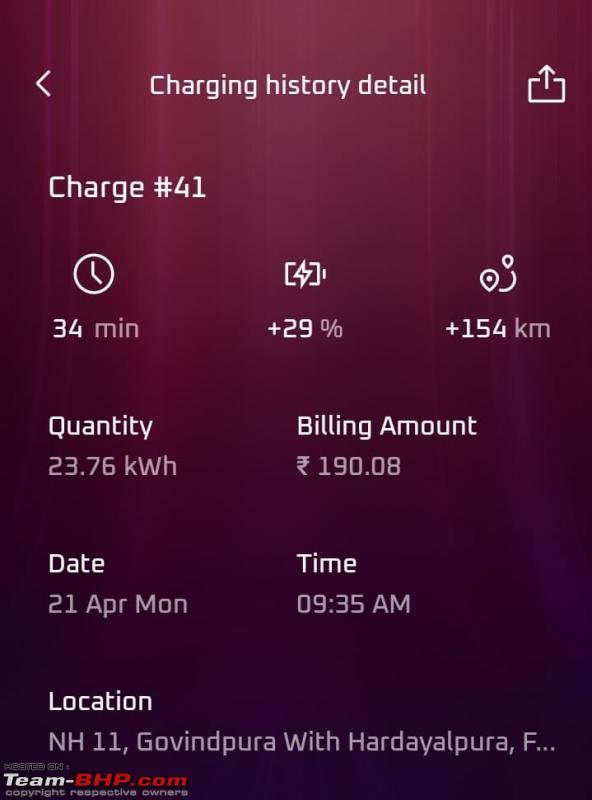
On the way back, saw an XOBOLT charger with auto-charge function. I wanted to test it, as I was not able to register for Autocharge with ChargeZone earlier.
Hence I wanted to see that it was the Car or CPO at fault.
- Registered Autocharge in one go
- Charger was charging at 30KW. One Tiago was also connected at 18KW
Topped ~13KW again. The car reported a gain of 15%.
Session details from the APP
Session details from the Car
Hence, total top-up of 44% in the entire trip
Crossed 500KM mark with 47% SOC. Which means 3% SOC left.
Taking into account that I left at 97% SOC, this becomes 6% SOC left.
Hence, I crossed 500KM with 94% SOC and 6% SOC Left

With full 100% SOC consumption, I did 515KM
Last 200KM show efficiency of 8.1KM/kwh, thanks to the incline now helping out. Do check out the average speeds for this run as well. Due to later in the evening timing, the roads were little free.

Total trip ended up with 546KM with 40% SOC Remaining.
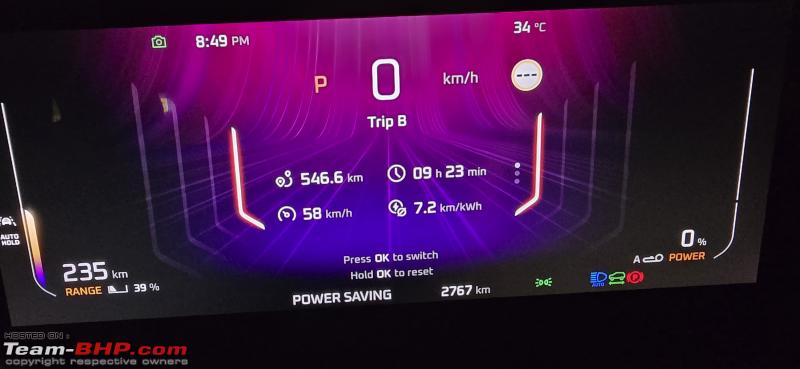
Few additional things I noted:
- Auto-Regen is the best regen for highways. It understands gradients, slope down, slope up, traffic etc and sets the regen accordingly!
- ADAS L2+ with Smart Pilot is amazing! It can drive on SH level roads with just centre dotted line. I was testing it in various scenarios, and it was working brilliantly. It even navigated a flyover with a downward 180-degree loop merging down to highway lane at 90km/hr. I have hated dumb ADAS systems in the past, but this thing has a mind!
- Met a Creta driver who was trying to race. Did not involve at that time; he chose another opponent, which was a Brezza. Brezza started to race post some instigation from the Creta driver. Changed from power saving mode to Default mode and overtook Creta while he was overtaking Brezza. Done and Dusted. Switched back to power saving and enjoyed the rest of drive with a grin!
Very satisfied with the car and it has now crossed 2700Kms. I have started to know it better. Will be doing all highway trip in this beast.
Check out BHPian comments for more insights and information.
News
Chennai to Coimbatore in my Mahindra XEV 9e: Range and charging
I started the trip with 88 percent charge, thought will try the trick proposed by Purohitanuj and set the mode to power saver. Reached Kallakuruchi A2B - 245 kms done with 37 percent charge left
BHPian motorhead1981 recently shared this with other enthusiasts:
Hi all,
Quick update on the return trip from Chennai to Coimbatore.
Used Glida charging hub @ Pallikaranai to charge before starting back, there are multiple 60 kw chargers there accessible through Statiq app. There were a lot of taxis charging at 6:30 am when I went but finding a spot was not an issue. The process was not as seamless as Zeon as I had one failure at 12 percent of charging & then I had to switch guns. Though rated at 60 kw, after first 10 minutes I was getting charged only at 40 kw. I charged from 31 to 88 percent in about an hour and then stopped as I ran out of patience.
I started the trip with 88 percent charge, thought will try the trick proposed by Purohitanuj and set the mode to power saver. Reached Kallakuruchi A2B - 245 kms done with 37 percent charge left.
Huge shout out to Shyampsunder for both the auto charge trick ans the 120 kw location. I found the 120 kw charger and with auto charge the experience was another level - started charging @ 93kwh, then one me on pulled in and started charging with the other gun - charging dropped to 73kwh. Charge topped upto 71 percent in 23 mins before it got cut due to low balance. By this time lunch hadn’t even arrived, I felt this charge was more than sufficient to get us home and stopped charging at 71.
Drove back & reached with 12 percent charge left.
Summary of return trip
Total kms - 501.7 kms, total percent of battery 51+59 =110 % as against 116 % while going to Chennai, average cruizing speed of 66kmph as against 70, 6.3 km/kwh vs. 6km/kwh and total drive time of 7 hours 37 minutes vs 7:13.
Summary of total trip
Total kms 1027.7, average speed 62kmph, 16 hours 37 mins and efficiency of 6.1km/kwh.
Total DC charging done:
54.55 kWh at Zeon to & from.
67.62 kWh at Zlida hub Pallikaranaim
Total time spent charging:
1. 36 minutes during trip to Chennai - offset by time spent at a2b having breakfast.
2. 82 minutes spent early morning at Glida hub - time spent watching YouTube in the third screen!!
3. 23 minutes during return - waiting for lunch to arrive.
Total cost of DC charging:
Rs. 1602.8 at Zeon + 1345 at Statiq = Rs 3037.38.
Niggles faced on return trip.
Just 2 episodes of flash in the screen asking me to check wheel alignment.
All in al it was a very enjoyable trip, during the way to Chennai I drove like how I would normally drive an Ice car and the way back I was more sedate. The difference in time taken was less than ten minutes & the charging infrastructure atleast in this segment is excellent. I did not have any range anxiety whatsoever. We were three adults & two kids. I think in our normal highway conditions I would be getting anywhere between 420 to 460 kms regularly. Starting with a full charge, can plan for 275-350 kms before needing a top up.

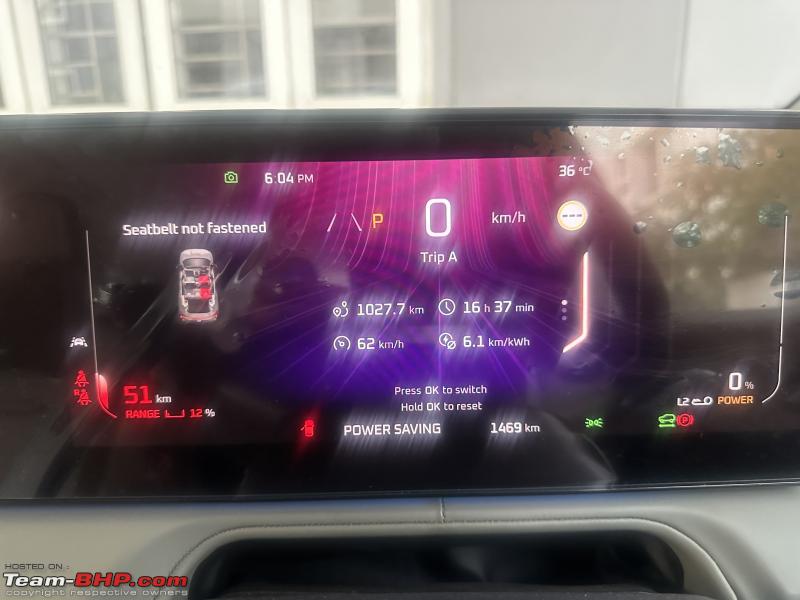
Check out BHPian comments for more insights and information.
News
Drove Creta EV & Mahindra twins: Comparo points as a potential buyer
Rear seat is quite spacious. Way more spacious than the BE 6, less spacious than the XEV 9e.
BHPian jetpack470 recently shared this with other enthusiasts:
I test drove this car today. The current car will replace the Jeep Compass. The other car I am considering is either of the Mahindra twins.
Pros:
- Classy conservative-ish looks
- Buttons felt good to touch.
- Pick up is effortless and quite nice.
- Rear seat is quite spacious. Way more spacious than the BE 6, less spacious than the XEV 9e.
- Not a lot of soft touch materials but nothing felt particularly cheap either.
- The screens were extremely responsive and felt pleasant to use (unlike in the Mahindras).
- Crystal clear parking cameras.
- Speakers were quite nice. Maybe not as nice as in the Mahindra but it's good enough for me and I imagine for 99% of people. The system is clear and I felt it had sufficient bass.
Cons:
- Central armrest not adjustable.
- Very clear wind noise 90 kmph onwards. In the Atto 3 I noticed this around 120, in the Jeep I get this noise at 150+. In the Audi A4 we have I haven't gotten this kind of wind noise so far. Haven't driven the BE 6/XEV 9e on a highway so can't compare.
- Car looks (and is) a little small.
Check out BHPian comments for more insights and information.
News
My XEV 9e gave me 553 km range: Insights on charging cycles & driving
If the car did not have any regen capabilities, still it would have given 370KMs / 100%.
BHPian purohitanuj recently shared this with other enthusiasts:
Some interesting data. 2213 kms (2113+25% Remaining) done in 4 cycle. This means, per 100%, I got 553KMs of Range. The regen system yielded with 160 Kwh of energy (equivalent to 2 full additional charge cycles)!
Hence, if the car did not have any regen capabilities, still it would have given 370KMs / 100%. These are fantastic numbers!

Current ODO + 125 KMs of indicated range remaining in the current (4th charge cycle)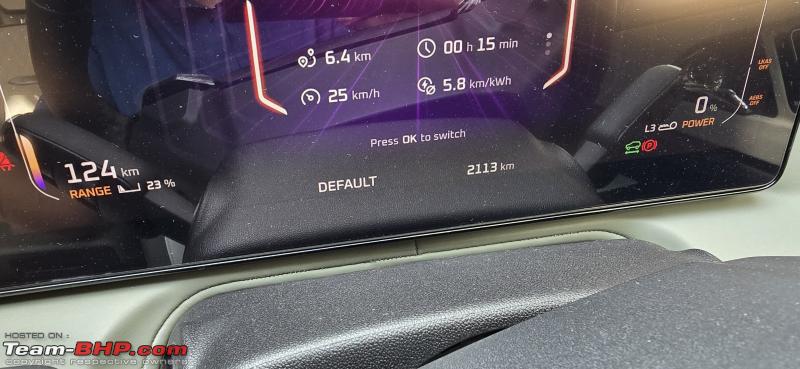
Also. I have been able to achieve 9.7km/kwh efficiency with Aircon set to 25c ( ambient temps > 37c - 40c) and cruising in the city-city highway.
What more can I say!
Check out BHPian comments for more insights and information.
News
Mahindra XEV 9e & BE 6 waiting period extends to 6 months
The XEV 9e accounts for 59% of the total bookings, while 41% are for the BE 6.
Mahindra has announced that it has delivered over 3,000 units of the XEV 9e and BE 6 electric SUVs since March 20. The carmaker is witnessing strong demand for its ‘Born Electric’ range, and as a result, the waiting periods have extended to up to 6 months in certain regions.
According to Mahindra, the XEV 9e accounts for 59% of the total bookings, while 41% are for the BE 6, with a majority of the customers opting for the top-spec ‘Pack Three’ variant.
The Mahindra XEV 9e and BE 6 are based on the brand’s INGLO platform. Both electric SUVs are offered with two battery options: 59 kWh and 79 kWh, offering up to 680 km of range.
Prices for the XEV 9e start at Rs 21.90 lakh, while the BE 6 range starts at Rs 18.90 lakh (ex-showroom).
Pages



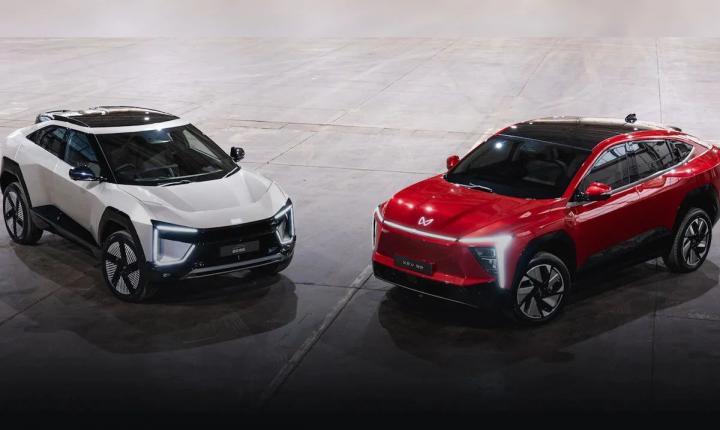







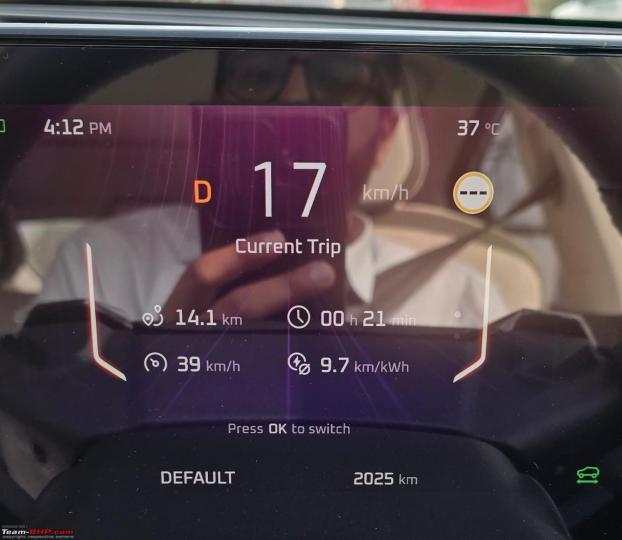
_0.jpg)
